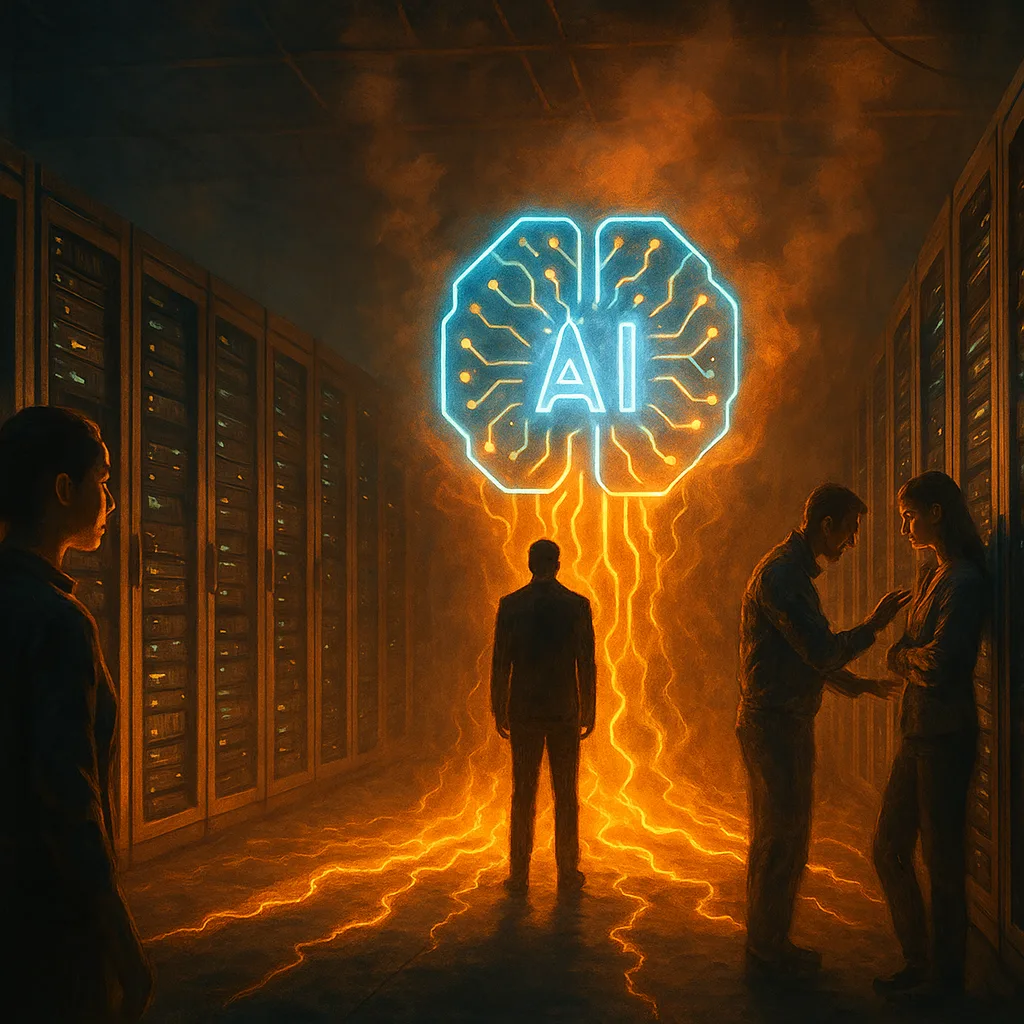Introduction
In the digital age where Artificial Intelligence (AI) towers as a formidable force, AI energy consumption emerges as a critical but often overlooked aspect of discussions around technological progress. The leaps in AI capabilities, powered predominantly by energy-hungry data centers, have led to escalating electricity concerns. Recent studies highlight that data centers, which are the backbone of AI operations, could potentially account for 8% of global electricity demand by 2030, a stark increase from today’s levels. This staggering figure underscores the importance of enhancing AI efficiency to mitigate the environmental impact of such growth.
Background
Over the past few years, AI energy consumption has shown an upward trend, largely due to the intense computational requirements of complex algorithms and models. As AI systems like Google Gemini enter the fray, the relationship between AI efficiency and energy usage becomes even more crucial. Google’s Gemini, for instance, illustrates the balance of sophisticated AI application and energy awareness. According to reports, a median prompt for Gemini consumes 0.24 watt-hours of electricity, ostensibly the same energy needed to power a microwave for one second link to Google Gemini AI energy report. This figure not only sheds light on the energy consumption of AI technologies but also highlights the strides made towards improving technology sustainability.
Current Trends
Currently, the AI sector is witnessing several trends aimed at optimizing energy consumption and enhancing sustainability. Leading companies are investing in more energy-efficient hardware and algorithms. For instance, Google’s Gemini has shown significant reductions in its energy and water consumption over time. In May 2025, its energy demand per prompt was remarkably less than a year before, demonstrating a 33-fold improvement. These ongoing efforts by major tech corporations signify a concerted push towards reducing the carbon footprint of AI operations and enhancing their technology sustainability.
Moreover, initiatives are underway to streamline AI applications, focusing on minimizing energy waste in non-essential operations. An analogy to this can be seen in the way electric vehicles are designed to conserve battery life by optimizing power distribution; similarly, AI systems are being tuned for efficiency, cutting down unnecessary energy expenditure without sacrificing performance.
Key Insights
Experts argue that the environmental impact of AI cannot be disregarded, as it has both direct and indirect consequences on global energy policies. A crucial insight is that AI energy efficiency improves linearly with advancements in hardware such as GPUs and TPUs, along with more refined algorithms. Enhancements in these areas have resulted in substantial reductions in the energy required for training AI models, effectively lowering the carbon footprint associated with AI operations.
For example, Google’s Gemini project shows that consistent improvements in AI models can lead to marked reductions in energy consumption and carbon emissions. Similar pursuits across the tech industry could pave the way for more sustainable AI applications, making them less dependent on excessive energy inputs.
Future Forecasts
Looking forward, the next decade promises to be transformative in terms of AI energy consumption. It is anticipated that new AI models will be significantly more energy-efficient, with future iterations of technologies like Google Gemini leading the charge link to Google AI Mode expansion and features. Innovations such as these are expected to drive a 50% reduction in AI energy demand over the next five years. Moreover, emerging technologies like quantum computing could revolutionize the energy efficiency landscape entirely, potentially allowing AI operations to function with minimal power requirements.
As AI continues to evolve, so will its mechanisms for sustainable practice. The emphasis on energy-efficient AI could lead to broader technological advancements, setting a benchmark for other technologies to follow, ultimately channeling innovation towards a greener planet.
Final Thoughts
As the world grapples with the dual challenges of technological advancement and environmental preservation, staying informed about AI energy consumption advancements is crucial. By sharing insights and engaging in discussions about sustainable practices in AI, you can contribute to the collective effort of reducing our ecological footprint. Spread the word, stimulate discussions, and support initiatives aimed at a more sustainable technological future.
Related Articles: Explore how Google’s innovations continue to shape AI efficiency link to additional sources.
In conclusion, the path forward involves a nuanced understanding of both the potential and the perils posed by AI energy consumption. Through concerted efforts in innovation and sustainability, the future of AI holds the promise of being as responsible as it is revolutionary.








